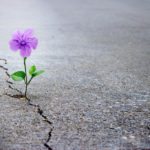Years ago, a friend of mine in the voice-over business shared a story about the oddest piece of direction he’d ever gotten while recording a commercial. The producer listened to him say the same line over and over again, asking him to try something different each time without giving him any particular direction to aim in.
Then, in a flash of inspiration, the producer said “Try wonderment – it needs more wonderment”.
My friend repeated the line with his best approximation of “wonderment”, and said not only was the producer delighted, he could feel the sense of wonder and awe in himself as he said the words in that way.
I was reminded of this story the other day when I spent the morning visiting with my very first professional coach, a man named Jay Perry. We played golf (a game he introduced me to almost 20 years ago), caught up on what was going on with our families and our lives, and spoke a little bit about the state of the coaching profession.
One of the most interesting parts of our conversation was discussing our criteria for certifying coaches, something he’s spent a lot of time reflecting on in his role as an advisor and mentor to the ADHD coaching community as I have as the founder and leader of Supercoach Academy.
In order to effectively train and certify people as coaches, it’s necessary to first inquire into the essential nature of coaching itself. In other words, what makes a “coaching conversation” different from a typical conversation between friends, the acceptance and acknowledgement of a trained counselor, or a purely instructive conversation between a teacher and student?
While there are many possible distinctions to tease out, one of my favorites that Jay talked about was this:
A coaching session by its nature is a facilitated conversation of possibility and wonder.Click To TweetThe phrase caught my imagination, and it’s been swirling around inside my brain ever since.
- What would my coaching conversations be like if I could introduce even 5% more wonder into them?
- How would my coaching conversations change if we focused even 5% more on what might be possible?
While the implications in coaching others are obvious, I quickly realized that the person I spend the most time in (mostly) silent conversation with is myself. What would it be like to facilitate conversations of possibility and wonder in my own life?
The same questions now took on a new relevance and immediacy:
- What difference might it make in my life if I spent even 5% more time wondering instead of planning, preaching, and evaluating?
- How much more innovation would I experience in my business if I focused even 5% more time on exploring possibilities instead of talking myself out of things or problem solving negative imaginary futures?
There’s a kind of “willingness to explore” that seems to be a prerequisite to reaping the benefits of possibility and wonder. Here’s how I talked about it in Creating the Impossible:
One of the participants in a group I was leading presented a seemingly intractable dilemma concerning their job. When I asked them if they’d be willing for the situation to change, they said, ‘Yes,’ but then went on to explain why it couldn’t.
The reason I knew they were wrong, without having to know anything about their job or personal history, is that there’s no such ‘thing’ as a ‘situation’ – we create ‘situations’ via the principles of Thought and Consciousness.
Thought is the principle behind creation – the infinite play dough that makes up the world we see around us. It’s the film strip that creates the specific version of the world we think is real out of the infinite possible versions waiting to be created.
Consciousness is the principle behind awareness – the light that brings our thinking to life and the movie screen that allows us to experience the projections of the mind as if they’re happening to us instead of coming from us.
Together, Thought and Consciousness create the illusion of a fixed, unchanging reality. We can see and feel what looks like the edge of the world and even point to the dragons who live there. After all, everyone knows a story about someone who started getting ideas above their station and wound up being swallowed alive.
Yet what about the times we’ve stepped over the edge of our world and survived? Did we just get lucky, or could it be that ‘edges’ only exist in the limited world of our own imagination?
After a bit of exploration of the illusory nature of our thought-created limitations, I asked the participant a second question: ‘Are you open to finding new ways to make money?’
While you might think that’s an easy enough question to answer, it completely stumped them. In fact, I was only able to get an answer (after multiple attempts) when I wrote the question on the board and offered a simple multiple choice:
a) Yes
b) No
Much to all our surprise, the answer they circled was ‘No.’
Bizarre as that may seem at first glance, think about it for yourself. Where in your life are you bumping up against the limitations created by your own imagination? Where do you think you already know what’s possible and what’s not? In what area or areas of your life are you trying to order off a limited menu, unaware that there’s a chef in the kitchen waiting to whip up something brand new if only you’d put in the order?
It’s what we think we know that holds us back; it’s what we’re open to being wrong about that opens up a wider world. And this is the key to expanding into the natural abundance of possibility that surrounds us:
When we open our mind to seeing something new, we inevitably see something new. Click To TweetWith all my love,![]()






